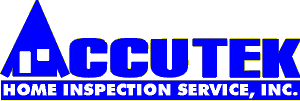
Contents:
 Back
to Library Back
to Library  Back
Home Back
Home

Chimneys only seem to get attention on cozy nights
with your sweetheart or when there is a problem.
The most graphic example is when the chimney becomes blocked and exhaust gases back into the home. This can cause serious health problems and may even be fatal to the occupants.
You know it's blocked when you feel a very high
level of humidity around the heater because the exhaust is not getting out of the house. You can also tell there's a blockage if excessive rust forms at the draft hood or bonnet. Fortunately, this does not occur too often, but because of its potential danger, it is very important to watch for.
The life expectancy of chimneys varies due
to:
- Geographic location. The further north you go, the more problems develop.
- The material used.
- Types of stone, brick, block or metal will have a significant
effect on the life of the chimney.
- The quality of workmanship.The exposure the chimney receives
from the sun.
Most chimney problems are age-related. Chimneys
tend to develop problems in 40 to 70 years. Of course, it is possible to have problems with newer chimneys. However, the percentage is small.
Masonry chimneys with small cracks in the liners
rarely pose a threat because of the masonry behind the liner, and
lowest temperature of the exhaust as it rises up and out of the
chimney. Smoke/exhaust will always follow the path of least resistance.
Older chimneys and chimneys with cracks, deterioration or other problems should be evaluated by a chimney specialist. Pick one who is a certified member of a nationally recognized chimney guild or association.
When repair work is needed, it may be partial rebuilding of the chimney and/or a liner. Liners vary in material and function. However, they should match the size of the exhaust collars at the heating appliances. Keep in mind that there are many safe, functional chimneys that are 200 years old or more.
The cost of a new chimney liner can range from
$1,000 to $2,000 for an average two-story house. Consulting with
a few firms is good advice when it comes to chimney repairs.
With maintenance, repairs and an awareness about
your chimney, many years of dependable service can be expected.
 Top
of Page Top
of Page

A developer was near completion on a new 75-home development in
suburban Philadelphia. A local home inspector was brought in to
review one of the properties for a client. The inspector noticed
that the fireplace chimney on the home he was inspecting was not
the proper height. He noted this in the report. Before he got into
his vehicle to leave for the next inspection, he took notice of
the other new homes in development. Each had similar chimneys, none
of which were the proper height. In fact, all 75 homes had similar
problems and, subsequently, all the chimneys had to be changed.
Not all chimneys are created equal. There are accepted standards
for chimneys, although some of these standards vary based on geographic location and local ordinances.
How high your chimney should be: Your chimney should be at least
two feet (2’)above any portion of the building within ten feet
(10’) of the chimney and at least three feet (3’) above
the point where it passes through the roof.
What size flue the chimney should have: your chimney should not
be smaller than the collar from the heating appliance.
How far the Chimney should be from combustible material: The chimney should be two inches (2") if it is built partially or entirely within the structure, and one inch (1") if it’s built outside the structure.
The height requirements for metal chimneys: The height requirements for metal chimneys are the same as for masonry chimneys: at least two feet (2’) above any portion of the building within ten feet (10’) of the chimney, and at least three feet (3’)
above the point where it passed through the roof.
How to know your fireplace will draw without lighting a fire. Generally, you can know if your fireplace will draw without lighting a fire by checking just a few things:
- Check for smoke stains on the front of the fireplace or mantle.
These stains indicate that something has gone wrong. What that
is will be determined later, but there is a problem if stains
are present. However, if a fireplace is new or if the mantle has
been recently painted, the stains may not be evident.
- Check the size of the flue and firebox opening:
- The chimney flue should be one-tenth (if square or rectangle)
to one-twelfth (if round) the size of the firebox opening or larger (e.g., and 8" x 12" chimney flue, or 96 square inches, should have a firebox opening of 960 square inches, (approximately 30" x 32").
- The Chimney should be two feet (2’) above the roof or any
roof structure within ten feet (10’) and a minimum of three
feet (3’) above the roof.
- Other criteria, such as the throat and smoke shelf should be
considered. However, if the flue to the firebox ratio is correct
and the chimney height is acceptable, the chimney will probably
draw.
Most chimneys meet the basic requirements. If yours is not one
of them, you probably would have figured out by now that something
is wrong. Consult a local home inspector or a chimney specialist
from a recognized chimney association.

 Back
to Library Back
to Library  Back
Home Back
Home  Top
of Page Top
of Page
This site © 2010 Accutek Home Inspection Service,
Inc.
Internet Publishing and Hosting provided by GrapevineNetworks.com
Contact the webmaster with questions or comments.
|